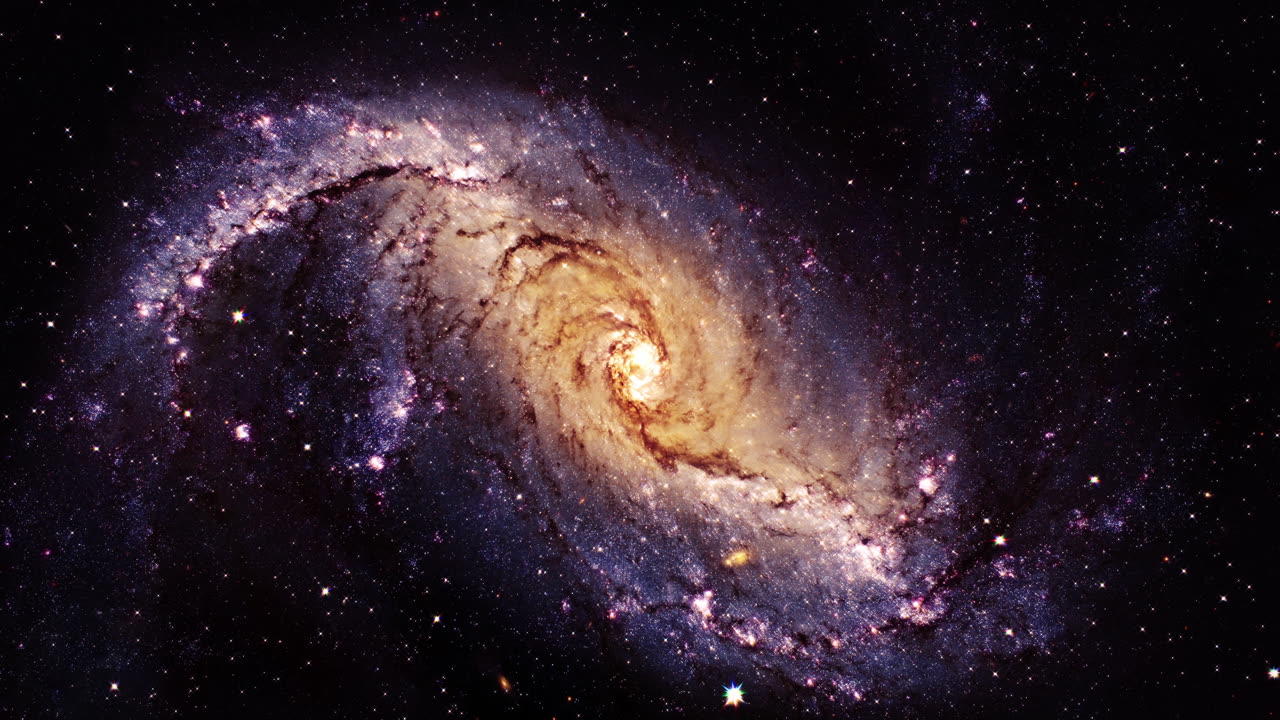Premium Only Content

Galaxy
Space nebulae are stunning cosmic formations composed of gas, dust, and various celestial elements. These captivating structures are often massive, spanning vast distances in space. They come in various shapes, sizes, and colors, each displaying its unique characteristics. Here are some key points about nebulae:
Formation: Nebulae are formed from the remnants of dying stars or through the process of star formation. When massive stars reach the end of their lifecycle and explode in a supernova, they scatter elements like hydrogen, helium, and heavier elements into space. Over time, these elements can coalesce, forming nebulae.
Types: There are different types of nebulae:
Emission Nebulae: These nebulae emit light of their own. They often appear reddish due to ionized hydrogen gas.
Reflection Nebulae: These reflect the light of nearby stars and appear bluish in color due to scattered starlight off dust particles.
Planetary Nebulae: Formed from the outer layers of dying stars, these have diverse shapes resembling planets in early telescopic views.
Dark Nebulae: Composed of dense dust, these obstruct light from passing through, creating dark patches against the background stars.
Characteristics: Nebulae can showcase mesmerizing colors due to the ionization and excitation of gases, often caused by nearby stars or intense radiation. They can take on various shapes—some appear as vast clouds, while others have intricate, filament-like structures.
Significance: Nebulae play a crucial role in the lifecycle of stars. They are the birthplaces of stars, where new stars form from the gravitational collapse of gas and dust. Additionally, they contribute to the enrichment of galaxies by releasing heavy elements into space.
Observation: Astronomers use telescopes equipped with specialized filters to capture the intricate details and colors of nebulae, revealing their beauty and providing insights into stellar evolution and the formation of celestial objects.
These cosmic wonders not only serve as captivating sights in the vastness of space but also offer valuable insights into the processes that shape the universe.
-
 5:34:34
5:34:34
JdaDelete
1 day ago $18.17 earnedOregon Trail Deluxe (1992) - Dudes with Dysentery
76.2K5 -
 6:29:12
6:29:12
RanchGirlPlays
11 hours agoNew Season of Fortnite! Chapter 6 Season 1 💚
56.4K7 -
 48:19
48:19
The Why Files
17 days agoProject Blue Beam: Staging a Fake Alien Attack to Take Over the World
84.4K105 -
 2:11:08
2:11:08
vivafrei
21 hours agoEp. 238: Kash Patel to CLEAN FBI'S CLOCK! Ray Epps DISMISSED! Trump Charges GONE! Debanking AND MORE
232K237 -
 7:51:06
7:51:06
Vigilant News Network
14 hours agoCancer Remission Achieved with Low-Cost Drug | Media Blackout
96.4K25 -
 44:46
44:46
Stephen Gardner
15 hours ago🔥 Col. Macgregor Reveals Putin's Hypersonic Strike Plan – Is Ukraine Ready for Revenge?
89.2K136 -
 1:10:25
1:10:25
Professor Nez
17 hours ago🚨Trump Just Unleashed the Deep State's WORST NIGHTMARE! (FULL BREAKDOWN)
63.7K289 -
 28:09
28:09
Michael Franzese
1 day agoThese Athletes Are STEALING Gold Medals From Women | Deep Dive
136K75 -
 6:04:01
6:04:01
TheItalianCEO
19 hours agoGTA V RP First Time EVER (help)
114K5 -
 5:41
5:41
Chef Donny
2 days agoPan Frying Dumplings With Thanksgiving Leftovers | Tasty Tailgating Ep. 12
82.7K1